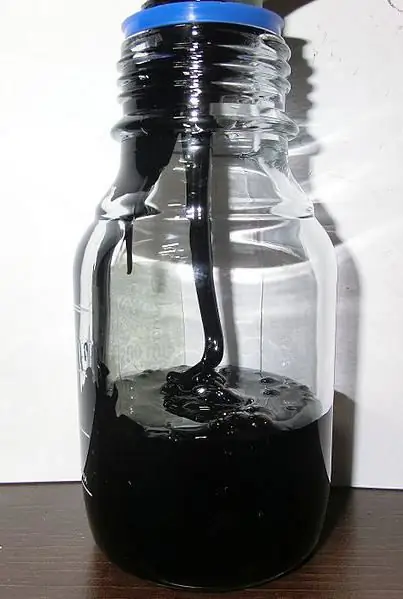2026 Author: Howard Calhoun | [email protected]. Last modified: 2025-06-01 07:12:56
Food shortages in the world are recognized today as a global problem. In 2009, according to experts, the number of people living in conditions of chronic malnutrition, there were already more than 1 billion people.
The food problem is caused by various factors. On the one hand, these are socio-economic reasons related to the way of production and distribution of resources, on the other hand, global ones, related to population growth, changes in diet, climate events and the finiteness of natural resources.
Scientific achievements create real prerequisites for eliminating the threat of food shortages. The first way is to improve the fertility of the land; use of marine resources and energy efficiency. The second way is to introduce the achievements of science for the purposeful change of agricultural crops and the development of promising animal breeds.
The canola plant (the marketing name of one of the rapeseed varieties) is a prime example of obtaining a given result using breeding and genetic engineering methods.
Precursor
The botanical name of rapeseed is Brassica napus olilifera Metzg. This is a herbaceous plant. Genus - Cabbage. Family - Cruciferous. Does not occur in the wild. It is believed that rapeseed originated from the crossing of spring or winter rapeseed with leafy cabbage.
Rape has been cultivated for 6 thousand years. A cold-resistant, moisture-demanding plant that thrives in temperate climates. Both spring and winter crops are widespread. Grains grown after rapeseed produce a higher yield. The plant improves soil structure, increases its fertility, enriching with nitrogen.
Using rapeseed
Cultivation of rapeseed is a commercially profitable area of crop production. Culture is widely used. Rapeseed is primarily used as an oilseed, which grew in importance towards the end of the 20th century as it began to be used to make biodiesel.
The flowers of the plant contain a lot of nectar. It is valued as a good honey plant. The productivity of 1 ha of crops is up to 90 kg of honey. In addition, the crop is used as a green manure.
Rapeseed oil: benefits and harms
The product is obtained from seeds by pressing in a screw press. Raw materials are preheated. The product is used in the production of soap, drying oil, in the textile and leather industries. Rapeseed oil is a raw material for biodiesel. It is used to produce lubricants and hydraulic fluids.
Restraining the spread of rapeseed was the inherent content of cruciferous seeds in erucic acid and glucosinolates. With a high content of these substances, it is not used for food and animal feed.
Eruic acid is one of the fatty acids. It is not metabolized in mammals,accumulating in various tissues. Studies have shown that erucic acid is a hazard to human he alth. It causes serious disturbances in the work of the heart, affects the blood vessels. The safe content of this substance in oil is from 0.3 to 0.6%.
Harmful to human he alth are also other organic compounds - glycosinolates, thioglycosides and their derivatives. They affect various human organs, give the oil a bitter taste.
Producers have focused all their efforts on breeding new varieties of rapeseed. It was necessary to reduce the content of erucic acid and glucosinolates to a safe minimum and get rid of the pronounced taste.
Canola plant
In 1974, breeder B. Stefanson in Canada developed a rapeseed variety with a low content of erucic acid and glycosinolates. The new variety of rapeseed was named "canola" (canola - Canadian oil low acid). It was a successful marketing ploy. The name stuck and became popular.

So what is canola? A plant that differs from traditional rapeseed by a low content of compounds harmful to mammals, including humans, - erucic acid and glucosinolates. This fact required a clear distinction between two different products from such similar plants. The first is oil for technical needs, produced from rapeseed, the second is a valuable food raw material, which is produced from canola. That's the point.
What does canola look like? Outwardly, it is no different from rapeseed. The plant has a taproot that grows to a depth of 2 meters. Stem - straight,covered with a slight bluish coating. Stem leaves differ from basal leaves, which are collected in a rosette. Flowers are collected in a brush, they are yellow or white. That is, outwardly rapeseed is the same canola. The photo clearly demonstrates this fact.

Canola pods are up to 10 cm long and up to 0.3 cm wide. One pod contains 15-30 dark brown spherical seeds, they ripen unevenly along the height of the plant, so after harvesting they are left for some time ripen.
Cultivation of canola has some peculiarities. It germinates earlier and grows faster than regular rapeseed. The canola plant is stronger and more resistant to external influences. Its yield is on average 20% higher.

Today, the crop is cultivated on an area of more than 4 million hectares. In Europe - in countries such as France, Great Britain, Denmark, the Czech Republic and Finland. The main producers in the world are China, India, Canada, Japan. In these countries flowering canola fields are part of the traditional rural landscape.

Further, with the accumulation of experience in the cultivation of canola, there was a need to obtain a culture that is more tolerant to herbicides. Such varieties were bred by genetic modification in 1995.
Canola oil
The nutritional value of the product provided it with a high demand in the global food market. Canola oil is similar in quality to olive oil at a lower cost than canola oil.
Canola oil stays longtransparent. It does not go rancid or develop an unpleasant odor when exposed to air, as does soy, for example.
Canola oil is a he althy product. Due to its high content of unsaturated fatty acids, it helps to strengthen blood vessels, reducing the risk of formidable diseases such as stroke and myocardial infarction. Thus, heart he alth is maintained. Butter has the lowest saturated fat content and no trans fats at all. With regular use of the product, a pronounced antioxidant effect is provided. It is involved in the regulation of fat metabolism. Due to its composition, the product is recommended to be used to lower blood cholesterol levels. This reduces the risk of blood clots and the occurrence of a number of diseases, including cancer.

Using canola oil
In cooking, it is used mainly in the preparation of cold dishes. The light texture and neutral taste of canola oil does not interfere with other products. It is part of various marinades, mayonnaise and other sauces are prepared from it. Sometimes it is mixed with olive oil.
The product is most widely used in Israel and Canada. In the homeland of canola, it can be found everywhere. Cafes and restaurants in their menu offer a variety of dishes using this product. Consumers who are aware of the dietary quality of products always prefer canola when they have a choice of oil. The perfect low-calorie salad recipe can't be beatwithout this product. It is also suitable for frying, since its smoke point is higher than that of olive oil.

In the US, canola oil has been classified as safe for human he alth for human consumption since 1985. However, in terms of product consumption, this country lags far behind its neighbor, Canada.
Use of canola in animal husbandry
In many countries, the plant is grown as a fodder crop. It is mowed down for green mass, haylage and grass flour are harvested. Canola is growing fast. It is very effective to use the crop as a pasture for pigs and sheep, as well as for fattening all kinds of animals and poultry. The canola plant is a storehouse of fodder protein, the content of which in the meal reaches 38%. It is easily digestible. Used as a high protein supplement.
Rape and canola. What's the difference?
Faced with an unfamiliar product, the consumer seeks to find out for himself its benefits and harms. The same thing happens with a product called Canola Oil. After all, the name of the plant is not familiar to us. So what is canola? The plant looks no different from rapeseed. The main feature, due to which this euphonious name appeared, is in the properties of the oil obtained from these two crops.
Rapeseed oil is a product for technical use. Valuable raw material for the production of environmentally friendly biodiesel, lubricants. The more erucic acid - and in traditional varieties of rapeseed its content reaches 50% - the higher the quality of biodiesel.
Canola oil -a valuable food product, which is sold under this name in many countries of the world. It does not pose a risk to human he alth. Canola products are widely used in animal husbandry.
In the post-Soviet space, the attitude towards the new culture is ambiguous. From complete denial to timid attempts to position canola oil as a dietary product. Time will tell who is right.
There are different ways to treat products derived from genetically modified plants, which include canola oil. The final choice is up to the consumer. To do this, it is very important to have reliable and complete information.
Recommended:
Production of olive oil and the cause of bitterness. Wood oil - what is it?

The European olive is an amazing tree with a lifespan of about 500 years! Moreover, its oils are endowed with a healing and simply beneficial effect. European olive oil is applicable in medicine. Often they relieve the symptoms of burns. In cosmetology, olive oil is used as a rejuvenating product of natural origin. We will also answer the question: wood oil - what is it?
Yaya Oil Refinery. Yaya oil refinery (Kemerovo region)

Yaya Oil Refinery "Severny Kuzbass" is the largest industrial enterprise built in the Kemerovo region in recent years. It is designed to reduce the acute shortage of fuel and lubricants in the Altai-Sayan region. The design processing capacity of the first stage is 3 million tons, the introduction of the second stage will double the output
Oil rocker: device, purpose. Oil and gas equipment

The article is devoted to oil-producing equipment, in particular pumping units. Considered the device of this equipment, characteristics, types, etc
Oil is a mineral. Oil deposits. Oil production

Oil is one of the world's most important minerals (hydrocarbon fuel). It is a raw material for the production of fuels, lubricants and other materials
How is oil produced? Where is oil produced? Oil price

Currently, it is impossible to imagine the modern world without oil. It is the main source of fuel for various transport, raw materials for the production of various consumer goods, medicines and other things. How is oil produced?

